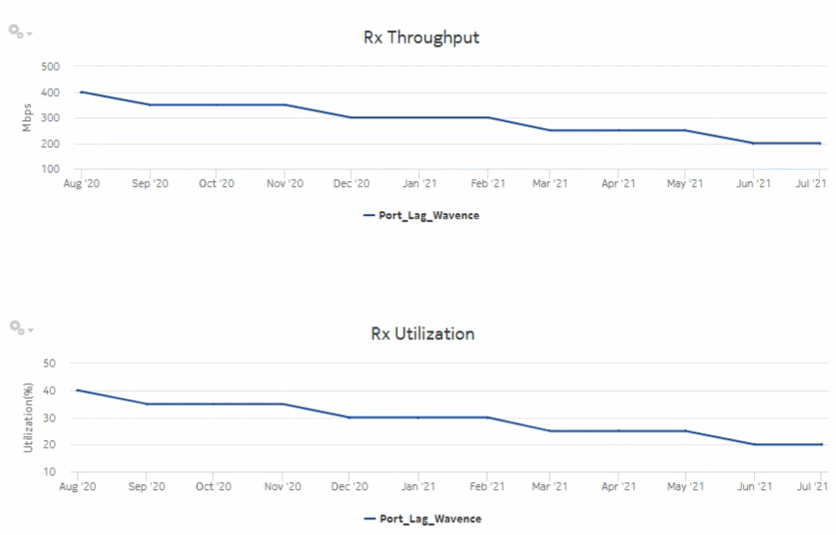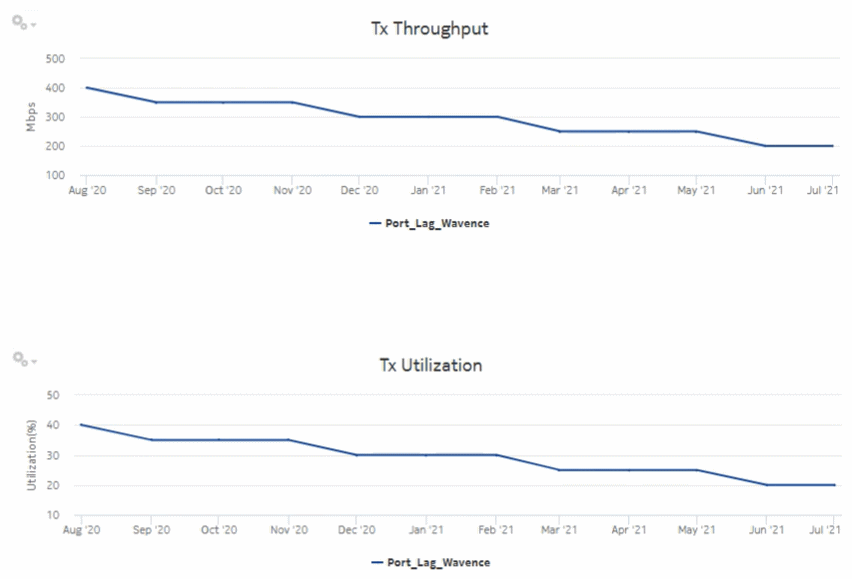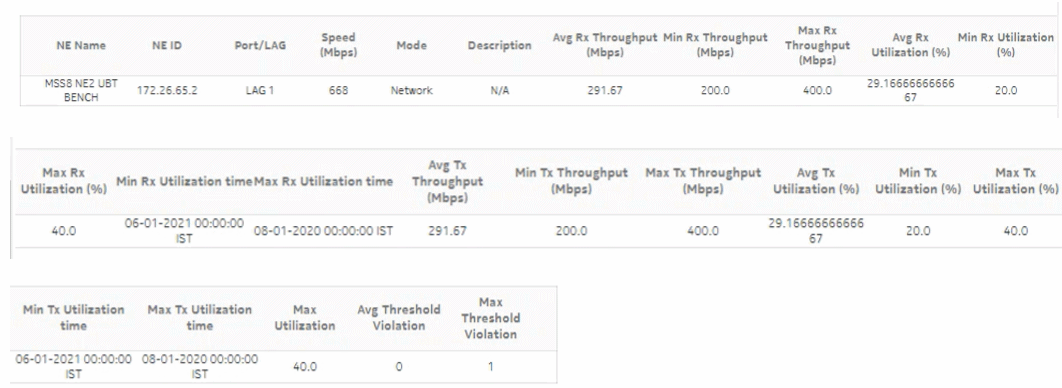Resource Group Utilization Detail with Forecast (NSP) report
Resource Group Utilization Detail with Forecast (NSP) report overview
The Resource Group Utilization Detail with Forecast (NSP) report includes utilization data for NEs managed by the NFM-P only, by the MDM (model-driven Nokia) only, or NFM-P+MDM-mediated NEs. The report shows forecast support for utilization and throughput. Forecasts are available for daily or monthly granularities. The report displays a set of time series graphs or tables for Rx and Tx throughput, Rx and Tx utilization, Rx and Tx throughput with forecast, and Rx and Tx utilization with forecast.
There must be data in the data dictionary tables in order to generate the Resource Group Utilization Detail with Forecast (NSP) report. Otherwise, an error occurs when executing the SQL statement for the report; see /opt/nsp/analytics/log/analytics.server.log for more information.
Use cases
Capacity planning—Use the report to examine resource group utilization patterns to plan for capacity requirements.
Limitations
Report limitations include:
-
Minimum and maximum throughput aggregation cannot be compared with the minimum and maximum throughput values generated from raw granularity.
Prerequisites
The following table describes the aggregation rules that must be enabled and telemetry subscriptions that must be configured for the NEs on which statistics are to be collected. The aggregation rules must be enabled to view the report for granularities other than raw data; see How do I configure analytics aggregation?. Enable aggregation and configure telemetry subscriptions; see the Telemetry information on the Network Developer Portal and the NSP Data Collection and Analysis Guide. For the report prerequisites for NFM-P-managed NEs, see Table 14-43, Temperature, CPU, Memory Utilization Summary report prerequisites.
See information in the NSP NFM-P Statistics Management Guide about creating or modifying a specific MIB statistics policy using a bottom-up method.
Table 19-16: Resource Group Utilization Detail with Forecast (NSP) report prerequisites
|
Aggregator name |
Monitored object class |
Statistics class |
Statistics collection |
NE types |
|---|---|---|---|---|
|
md-aggr:/md-aggr-base-interfaces-interface |
Telemetry Base Interface |
telemetry:/base/interfaces/interface |
Telemetry statistics |
All 7250 IXR variants 7750 MD SR Classic NE with gRPC telemetry collection enabled Cisco IOS-XR (NCS 7.6.2) (LAG only) Cisco XRV 7.6.2 (port and LAG) Huawei NetEngine 8000 (huawei-vrp-NE8K-M8) (port and LAG) Juniper vMX Junos 21.4R1.12 (port and LAG) |
Table 19-17: Resource Group Utilization Detail with Forecast (NSP) report prerequisites for NFM-P-managed NEs
|
Aggregator name |
Monitored object class |
Statistics class |
Statistics collection |
MIB name |
NE types |
|---|---|---|---|---|---|
|
Interface Utilization Statistics Aggregator |
equipment.PhysicalPort lag.Interface |
equipment.InterfaceAdditionalStats |
Performance statistics |
ifXEntry |
7210 SAS 7250 IXR 7705 SAR 7750 SR 9500 MPR-A Chassis 1 9500 MPR-A Chassis 4 9500 MPR-A Chassis 8 9500 MPR-E Chassis 1 9500 MPR-E Chassis 4 9500 MPR-E Chassis 8 9500 MSS-1c 9500 MSS-O ANSI 9500 MSS-O ETSI 9500 SA Wavence UBT-SA Wavence UBT-I Wavence MSS-1 Wavence MSS-1c Wavence MSS-4 Wavence MSS-8 Wavence MSS-E Wavence MSS-HE Wavence MSS-XE Wavence MSS-O Wavence SA |
Report characteristics
The following table lists the principal report characteristics.



